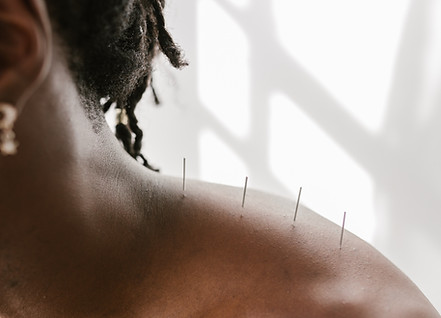More and more, people use practices like these from traditional Chinese medicine (TCM) to not only fight disease, but also prevent it. TCM is an ancient system of health and wellness that’s been used in China for thousands of years. Western medicine focuses mainly on treating disease. But TCM looks at your entire well-being.
Acupuncture is a key component of traditional Chinese medicine in which small needles are inserted into specific points along a muscle, nerve, tendon and/or fascia to correct the imbalance in the body’s qi, the energy that flows throughout the body via channels called meridians.
Acupuncture
According to the theory in Chinese Medicine, acupuncture works by stimulating points along energy meridians. Different points have different functions and are chosen based on the diagnosed pattern of imbalance. Energy needs to be regulated, tonified or reduced. Acupuncture helps the body to regain its natural healing ability and return to homeostasis. It can even promote circulation of blood and oxygen in order to stimulate the nerves and nervous system.
Modern research has uncovered many mechanisms on how acupuncture affects the human body. It regulates the autonomic nervous system, which will create changes in blood pressure, pupil size, muscle activity, heart and pulse rates and skin temperature.

Cupping
The primary objective of cupping therapy is to move qi and blood and remove stagnation of any kind from the body. Recent studies have shown that cupping therapy has many therapeutic effects including:
-
increase in blood circulation
-
reduction in pain, swelling, inflammation, and muscle spasm
-
better flow of synovial fluids in the joints
-
strengthens the digestive function and absorption of nutrients
-
detoxifies the blood
Hijama
Hijama involves the creating of suctions and negative pressure through cups and then making small, shallow incisions in the skin surface to draw out stagnated blood and toxins from the body.
Cups are applied to specific parts of the body, such as affected areas, muscles and organs to circulate blood, reduce stagnation, reduce inflammation and relieve pain. Hijama increases the blood flow by expanding blood vessels with the negative pressure created through a suction pump and cup.
Benefits:
-
Removes toxins
-
Oxygenates the area
-
Boosts immunity by activating the lymphatic system
Tuina
Tuina is translated as pushing and grasping, and is performed based on the theories of TCM with the principle that the practitioner is either taking away or adding energy.
Tuina is an important component of Traditional Chinese Medicine, using techniques and manipulations to stimulate acupuncture points, Tuina also covers wider range of the body surface so as to correct physiological imbalances in the body.
Tuina helps to treat many disorders from soft tissue injuries to many other kinds of ailments such as:
-
stiff neck and distension of shoulders
-
frozen shoulder
-
sore back
-
sciatica
-
aching muscles
-
diarrhoea
-
constipation
-
low energy
-
stress-related symptoms such as insomnia, headache, tension headaches
Our comprehensive, holistic approach to your health and beauty
Our medical team will provide a comprehensive diagnosis and assessment of the area you would like to perform any procedure. We will discuss all the available options that can either be paired or added for an integrated care of your health and beauty - an approach that will treat you from the inside out. Our team offers naturopathy which can assess your nutrition/diet/lifestyle for optimal skin health, IV therapy and vitamin infusions for rejuvenated skin, medical facials including microneedling and hydrafacials, and more.
All new clients will consult with a certified and trained medical staff in order to properly assess the preferred area of treatment.






